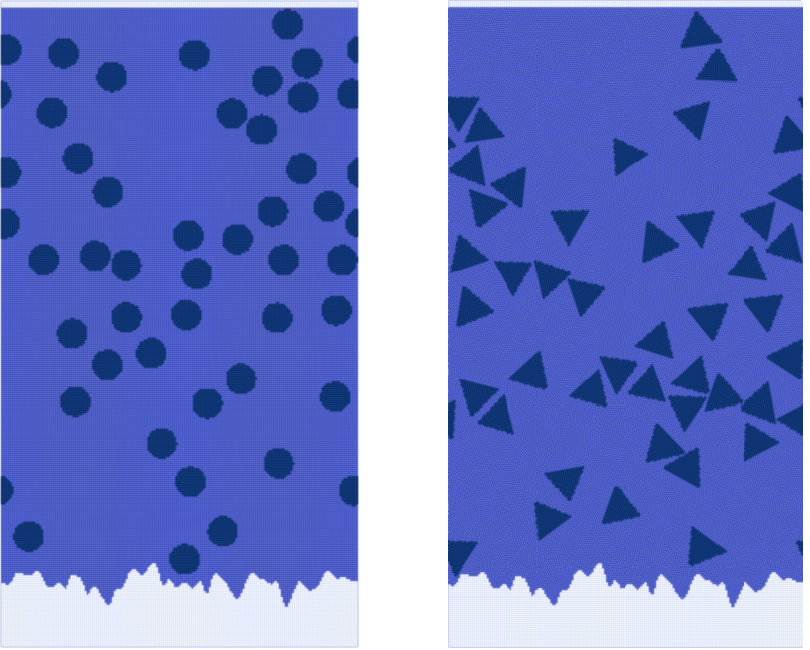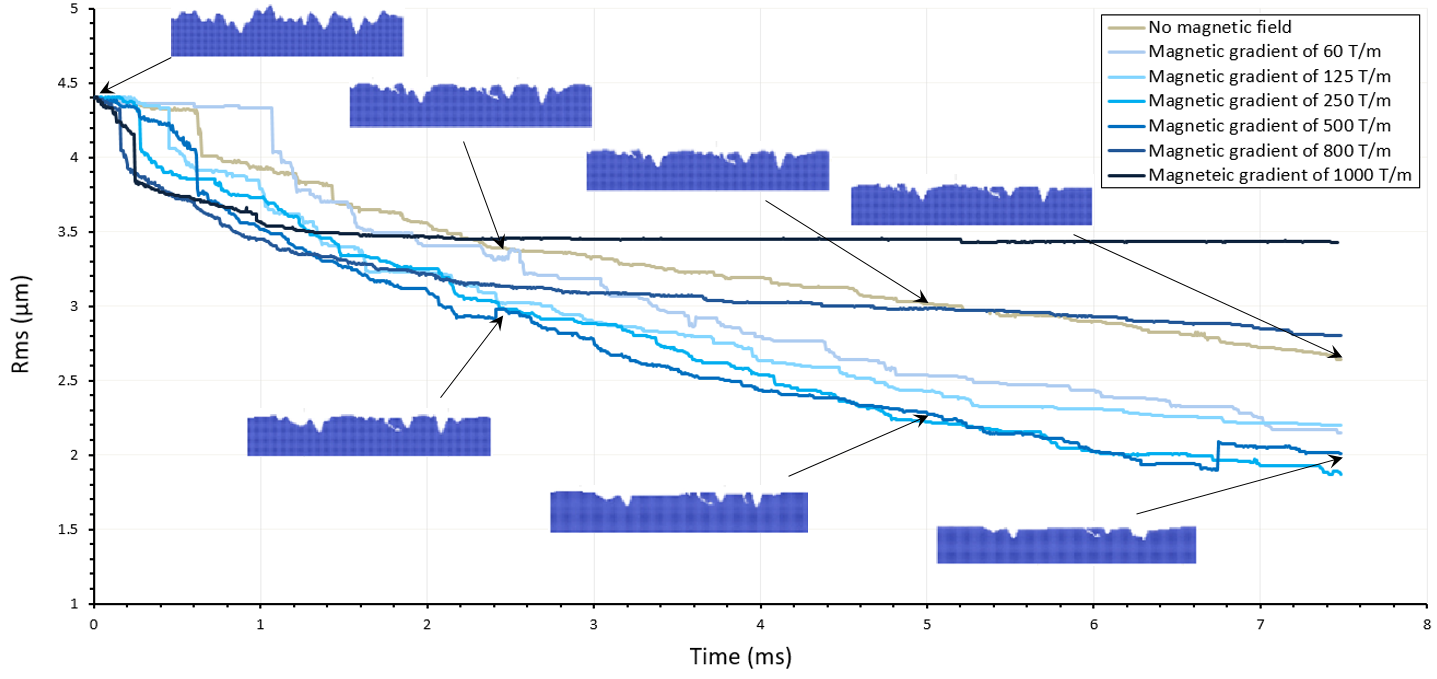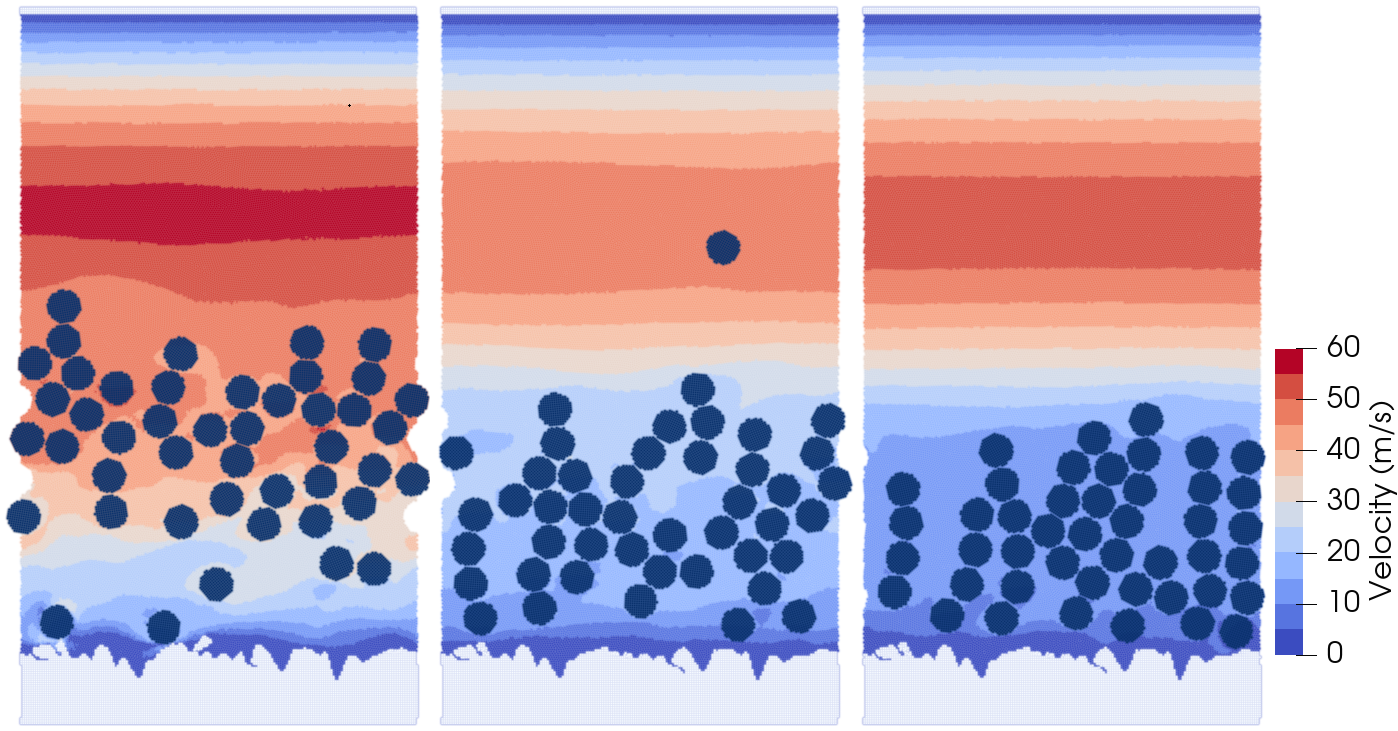Magnetic assisted abrasive flow machining
Introduction
Additive manufacturing techniques are able to produce a variety of complex geometries, yet with poor surface quality. Surface quality in the micrometer range is of paramount importance for parts used, for instance, in automotive and aerospace industries where it affects the efficiency of engines or the lifetime of components. Despite all the technological advancements of traditional surface finishing processes, e.g. grinding and honing, they are limited to particular and rather simple geometries and not able to process complex surfaces, especially internal surfaces and drill holes. Abrasive flow machining (AFM) is an advanced and versatile finishing process that is applicable to surfaces of complex geometries. Fluids of different viscosities depending on the feature size of a given component are used to transport abrasive grains. For small passages, low viscosity fluids are employed, whereas for large structures viscoelastic polymeric media are used. Finishing happens by cutting, deburring and polishing as the abrasive grains within the suspension interact with the surface.
The task

In the current use case, we numerically study magnetic assisted abrasive flow machining (MAAFM). We are interested in the effect of an external magnetic field on the performance of the magnetizable abrasive grains. The aims are to provide insights into the mechanism of material removal on the microscale and to optimize the process parameters with the gained knowledge. The simulation involves modeling the hydrodynamics of the carrier fluid, dynamics of the grains, fluid-grain interactions, fluid-surface interactions, grain-surface interactions, and surface deformation and fracture. In order to monolithically deal with the multi-physics of the problem governing equations of all phases namely fluid, grains and surface are discretized by using the Smoothed Particle Hydrodynamics (SPH) method in SimPARTIX. Being a Lagrangian particle method, SPH is able to easily handle large deformations, e.g., fluid flows and, moving boundaries and suspended rigid bodies. Besides, SPH is cable of tracking topological changes due to surface abrasion and therefore maintain fluid-structure interactions throughout the course of the process in a straightforward manner. Grains are discretized by particles that are rigidly connected and their dynamics are determined by using a rigid body motion solver. This gives us the freedom of modeling grains with arbitrary geometries (see figure). Furthermore, to be able to study the effect of magnetism in the MAAFM process, the dipolar forces caused by an external field or by the stray fields of surrounding grains are included in the calculations.
Results

In the absence of an external magnetic field grains occasionally collide as they follow the fluid streamlines. This results in a random swirling movement of the grains within the carrier fluid. The grains may hit the surface as they travel through the channel and cause surface abrasion if the impact energy is high enough. Applying a magnetic field gradient can enhance the performance of the abrasive process. In this case, in addition to the chain formation of the magnetized grains, the magnetic field exerts a body force on the grains directed towards a surface. In consequence, grains are more likely to hit the surface. Those grains bounce off the surface and partly disturb the arrangement of the chains as they collide with other grains. Afterwards, new chains are quickly formed and this process repeats over and over. The evolution of the surface roughness measured by the root mean square (Rms) is reported in the figure for a simulation with no external magnetic field and for simulations with magnetic field gradients of various strength. The results clearly show the influence of a field gradient on the performance of the MAAFM process. In comparison with the results for the simulation without an external magnetic field, a magnetic gradient of 500 T/m allows to double the surface smoothing rate. Simulation snapshots of the case with no magnetic field and of the case with a magnetic field gradient of 500 T/m at different points of time are shown as insets in the figure to illustrate the progress of surface smoothing.

However, increasing the magnetic field gradient beyond 500 T/m slows down the material removal and eventually stops it completely. A too strong magnetic gradient forces the grains to aggregate in the vicinity of the surface and to move slowly along the surface (see figure). This behavior prevents particle impacts and surface abrasion. Therefore, an increase in the performance of MAAFM can only be achieved if the external magnetic gradient is properly tuned for given process conditions.
 Fraunhofer Institute for Mechanics of Materials IWM
Fraunhofer Institute for Mechanics of Materials IWM